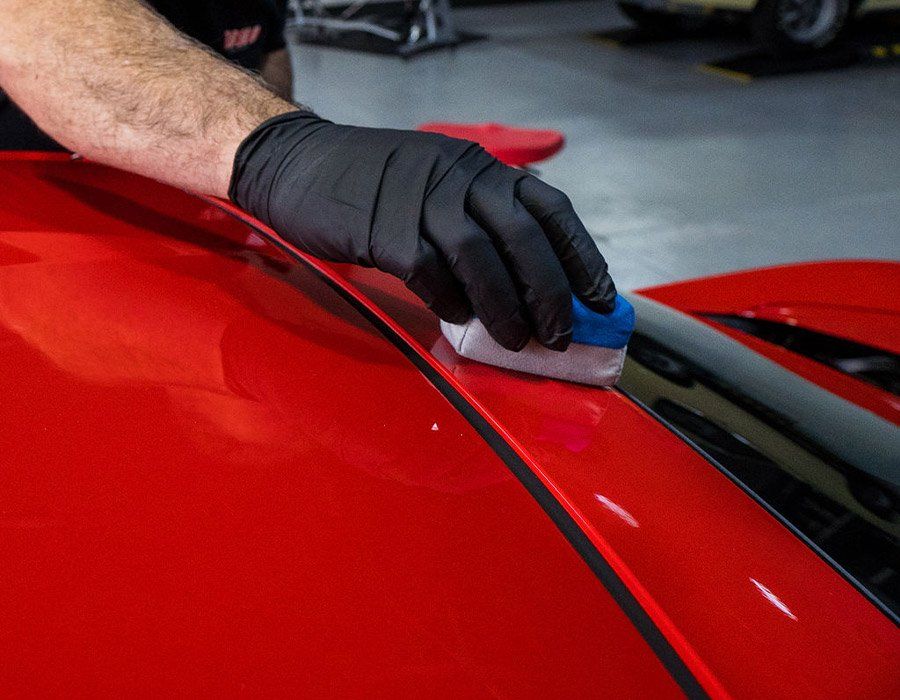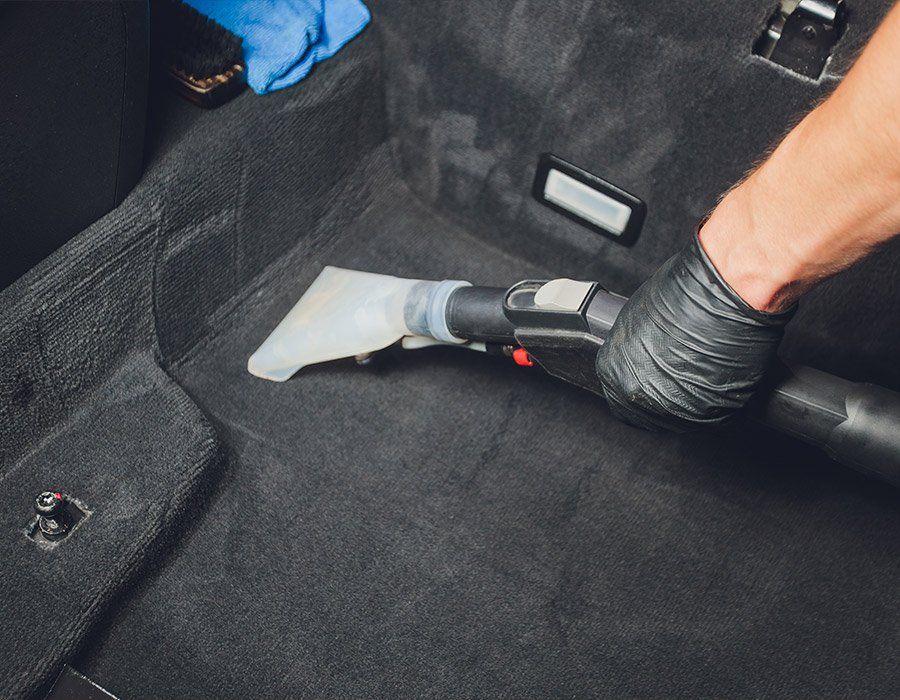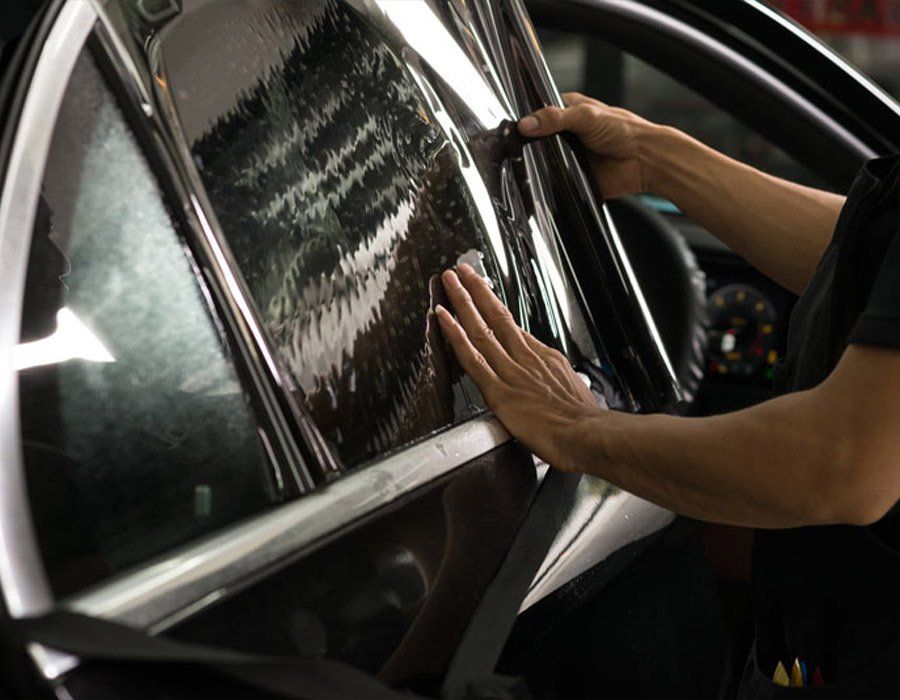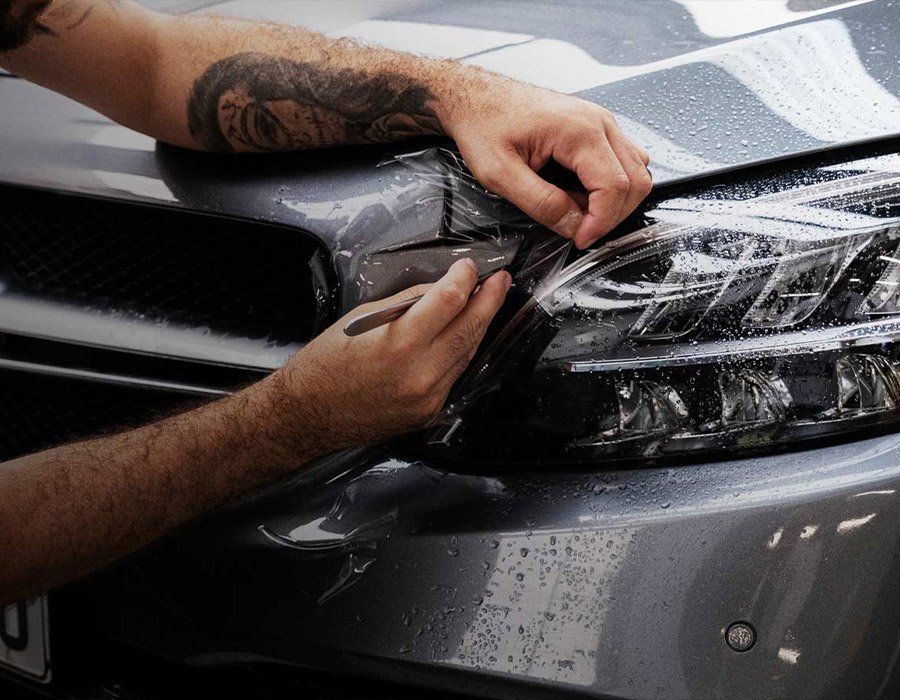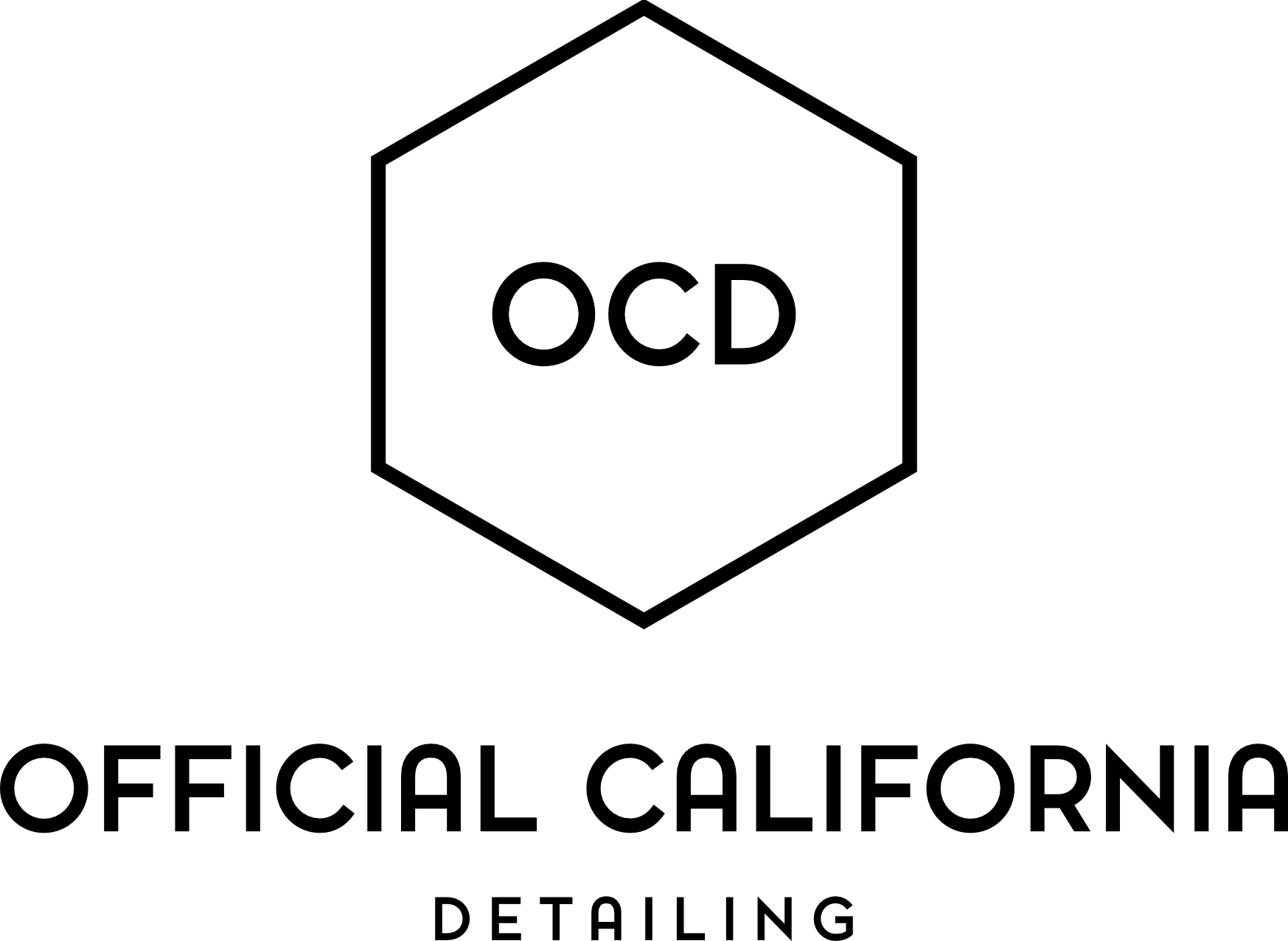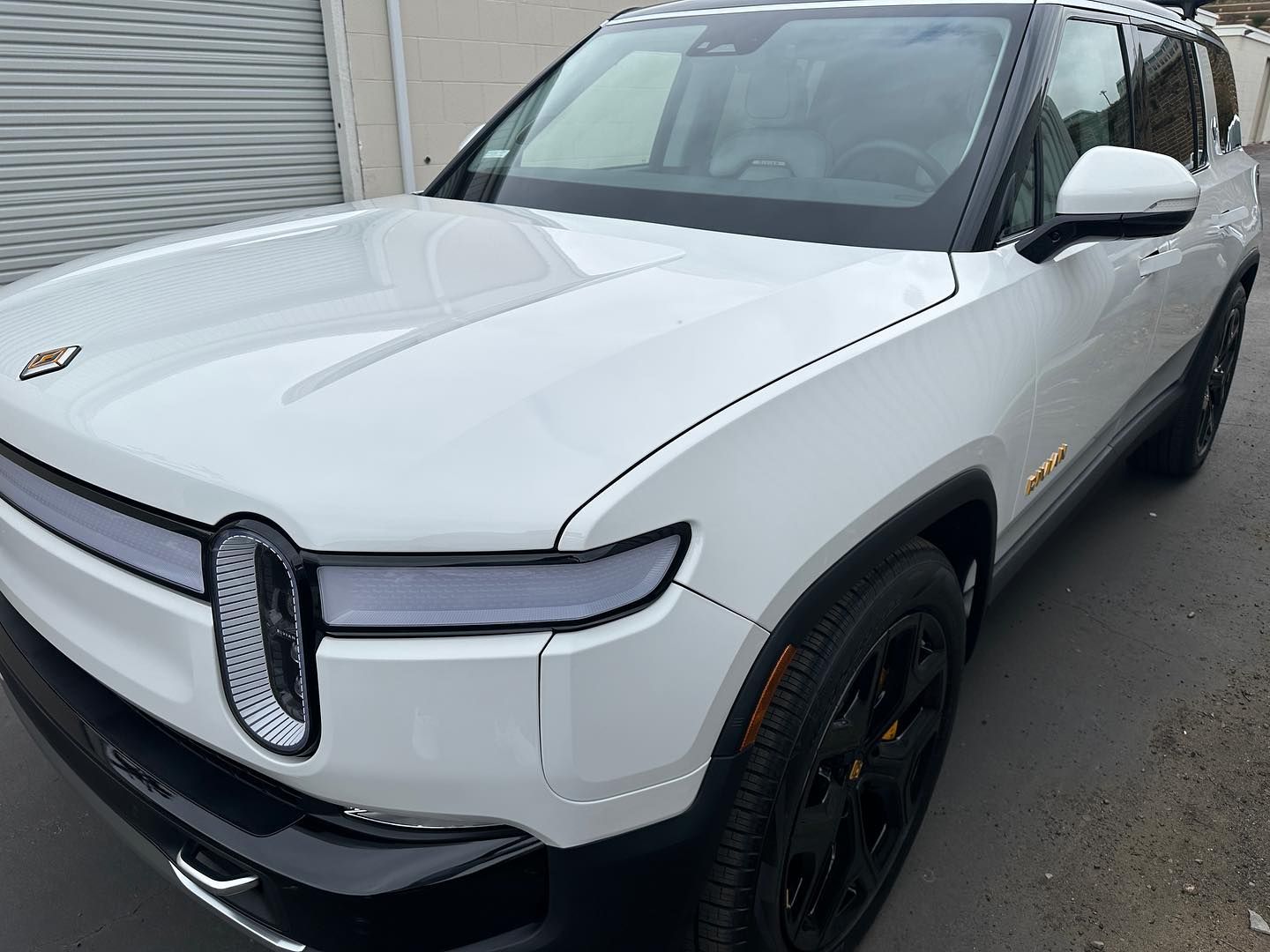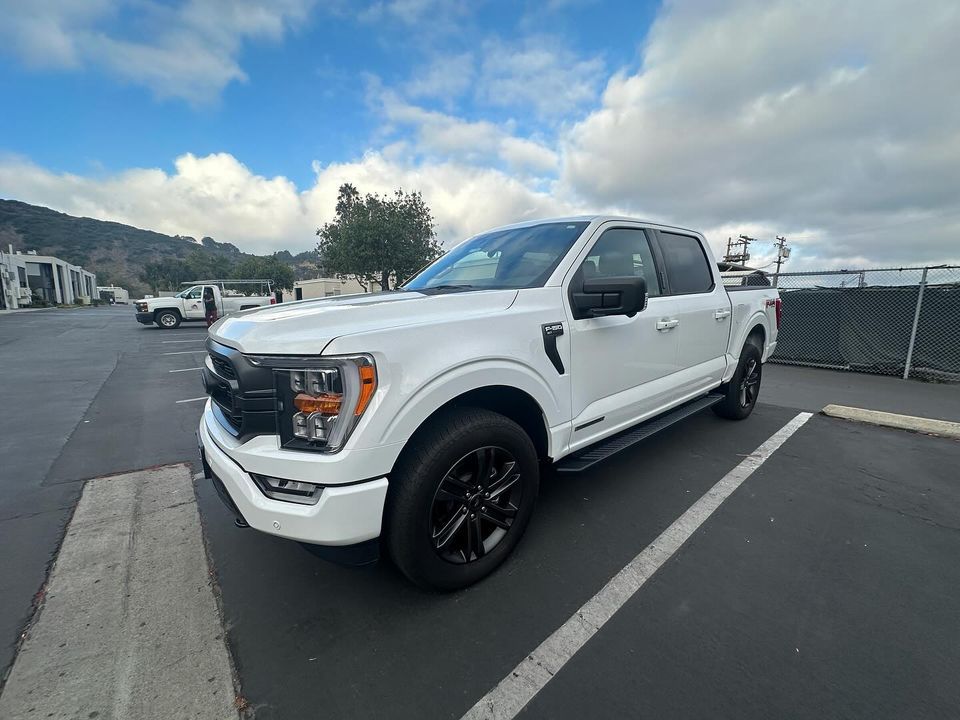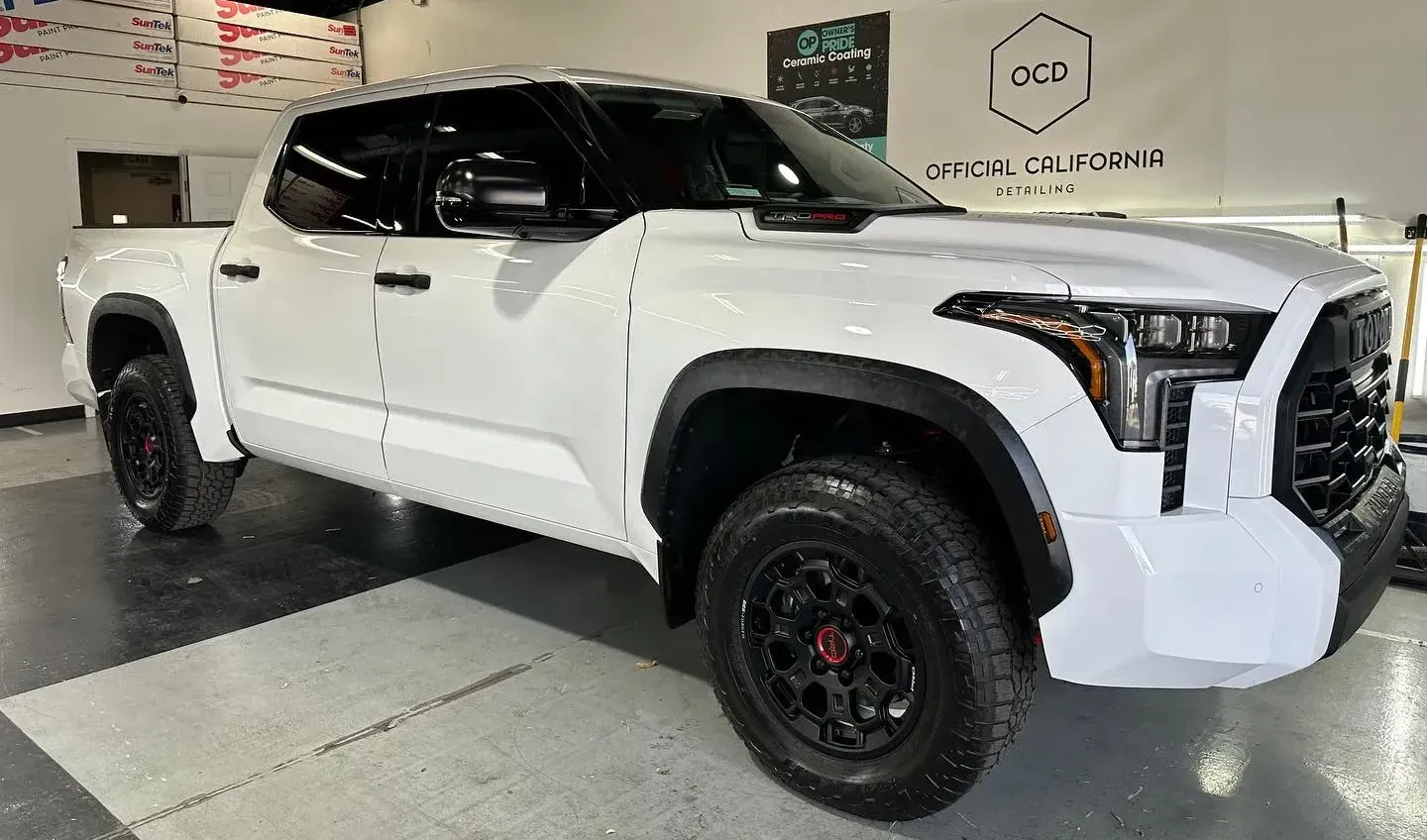Official California Detailing Blog
The Science Behind Paint Protection Film: How PPF Works for Your Car
(619) 760-4962 GET A QUOTE NOWPaint protection film (PPF) is an advanced technology that works like an invisible shield for your car, guarding it against scratches, chips, and the everyday wear and tear that can make a vehicle look old before its time. In this article, we'll discover the science behind paint protection film and how PPF works, why it's worth considering, and how it helps maintain your car’s value and appearance for years to come.
Paint Protection Film (PPF) works by absorbing and dispersing the energy from impacts caused by rocks, bugs, and other debris, acting as a barrier between these elements and the vehicle's painted surface. Its transparent thermoplastic urethane material is engineered not only to provide physical protection against scratches and chips but also incorporates self-healing properties that allow minor abrasions to disappear when exposed to heat, thus maintaining the aesthetic appeal of your vehicle over time.
What is Paint Protection Film?
Paint Protection Film, commonly referred to as PPF or clear bra, is an innovative, transparent film made from thermoplastic polyurethane. This remarkable material acts as a barrier against a variety of harmful elements that can damage your vehicle's surface. Whether it’s small rocks, road debris, bug splatter, or chemical stains—PPF works to shield the delicate paint underneath, keeping your car looking pristine and new over time.
The applications of this technology extend beyond just cars; it can also be used on motorcycles, RVs, airplanes, and even cell phones! This versatility makes PPF an essential component for anyone wanting to protect their investments in automotive design and aesthetics. When handled correctly, paint protection film not only maintains that showroom shine but can also enhance the color depth of the paint beneath it, adding a layer of visual appeal.
PPF is designed to absorb impact, dissipating energy from minor abrasions before they have a chance to reach your vehicle's paint. Imagine each little stone kicking up while you drive; rather than leaving a mark, it meets the resilient layer of PPF first and often comes away without causing any damage. Notably, high-quality films can heal. If you accidentally scratch the surface, simply exposing it to ambient heat will cause the film’s molecular structure to reform, making those scratches fade away as if nothing ever happened.
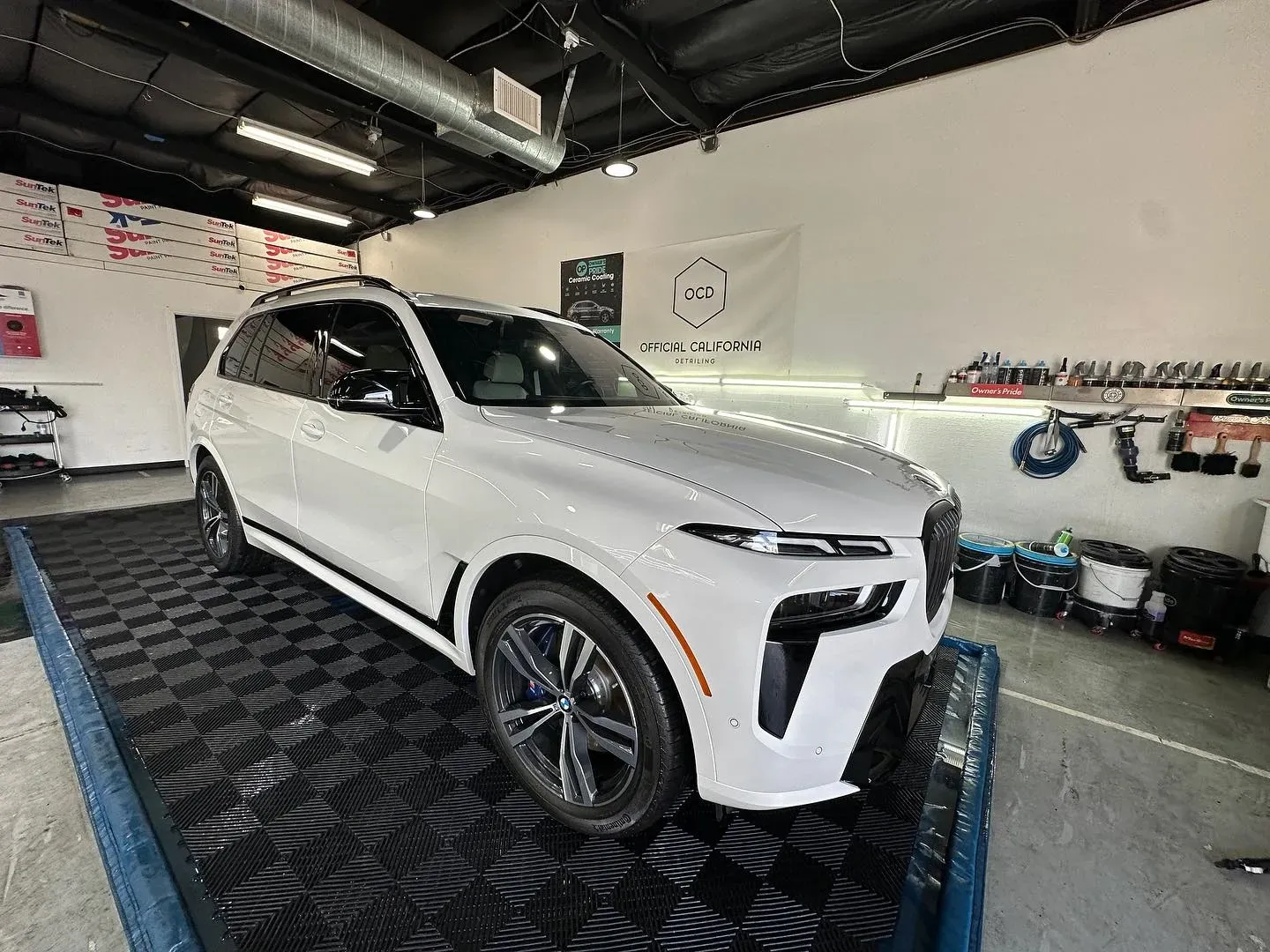
How Does Paint Protection Film Work?
At its core, PPF's multi-layer design is engineered to absorb and disperse impact energy, acting as a formidable shield against harsh elements. The film includes several distinct layers that collectively safeguard your vehicle's paint. This involves sophisticated material properties that enhance its protective abilities.
Layer-by-Layer Breakdown
When we look closely at each layer of PPF, we see how they serve specific functions in terms of protection:
Polyester Release Liner: This initial layer plays a vital role before the film even gets applied to your car. It protects the adhesive underneath from dust and debris, ensuring a clean surface for application. By keeping the adhesive intact and ready for bonding, the release liner ensures that PPF can adhere perfectly to your vehicle without imperfections.
Adhesive Layer: Next comes the adhesive, which allows the PPF to bond securely to the vehicle's paintwork. This adhesive is specifically formulated to provide a strong bond while being removable—meaning when you decide to replace or remove the PPF in the future, it won't risk damaging your car's underlying paint.
Polyurethane Layer: Often referred to as the heart of the film, this layer provides unparalleled flexibility and resilience. Made from thermoplastic urethane, it absorbs impacts and allows movement of the surface beneath—acting like a shock absorber for your paint. This feature helps reduce chip damage significantly since it absorbs up to 99% of impact energy from road debris.
Topcoat: The final layer adds an extra line of defense against environmental threats. It protects against UV radiation—which can cause fading and degradation—and features self-healing properties. When subjected to ambient heat, such as sunlight or engine warmth, minor scratches on this top layer can vanish as the material re-forms itself.
With these layers working synchronously, PPF creates a robust barrier for your vehicle’s exterior. Exploring how these layers contribute to its effectiveness will shed light on why this technology stands out among protective solutions.
Scientific Principles of PPF
At its core, Paint Protection Film is a marvel of material engineering and chemistry. One of the most impressive features of modern PPF is its self-healing capability, which sets it apart from other surface protectants. This advanced functionality stems from the use of elastomeric polymers in the topcoat of the film. When these polymers are heated—whether from direct sunlight or warmth generated by the vehicle's surface—they effectively remember their original shape. Given the right conditions, minor scratches and swirl marks can disappear as if they were never there.
Imagine you're driving down the highway, and a tiny pebble strikes your hood. Instead of cringing at the thought of a noticeable chip, you can take comfort in knowing that PPF can absorb that impact. The film acts like a cushion, absorbing and dispersing the energy before it reaches the paint underneath. Research indicates that this protective layer can withstand impacts as high as 120 mph without suffering significant damage.
In addition to its durability against physical damage, PPF also excels at maintaining its clarity and aesthetic appeal over time. As with any product designed to endure the elements, clarity is a major concern. High-quality PPF has been engineered to resist yellowing and degradation caused by UV exposure—ultimately keeping your paint job intact over a decade or more.
Each technology comes with its own strengths; however, understanding them allows car owners to make informed decisions when it comes to protecting their vehicles.
The science behind paint protection film rests on its unique blend of advanced materials and innovative design features. With properties that allow it to heal itself from minor blemishes and provide extraordinary protection from daily wear, investing in PPF enhances both appearance and value over time.
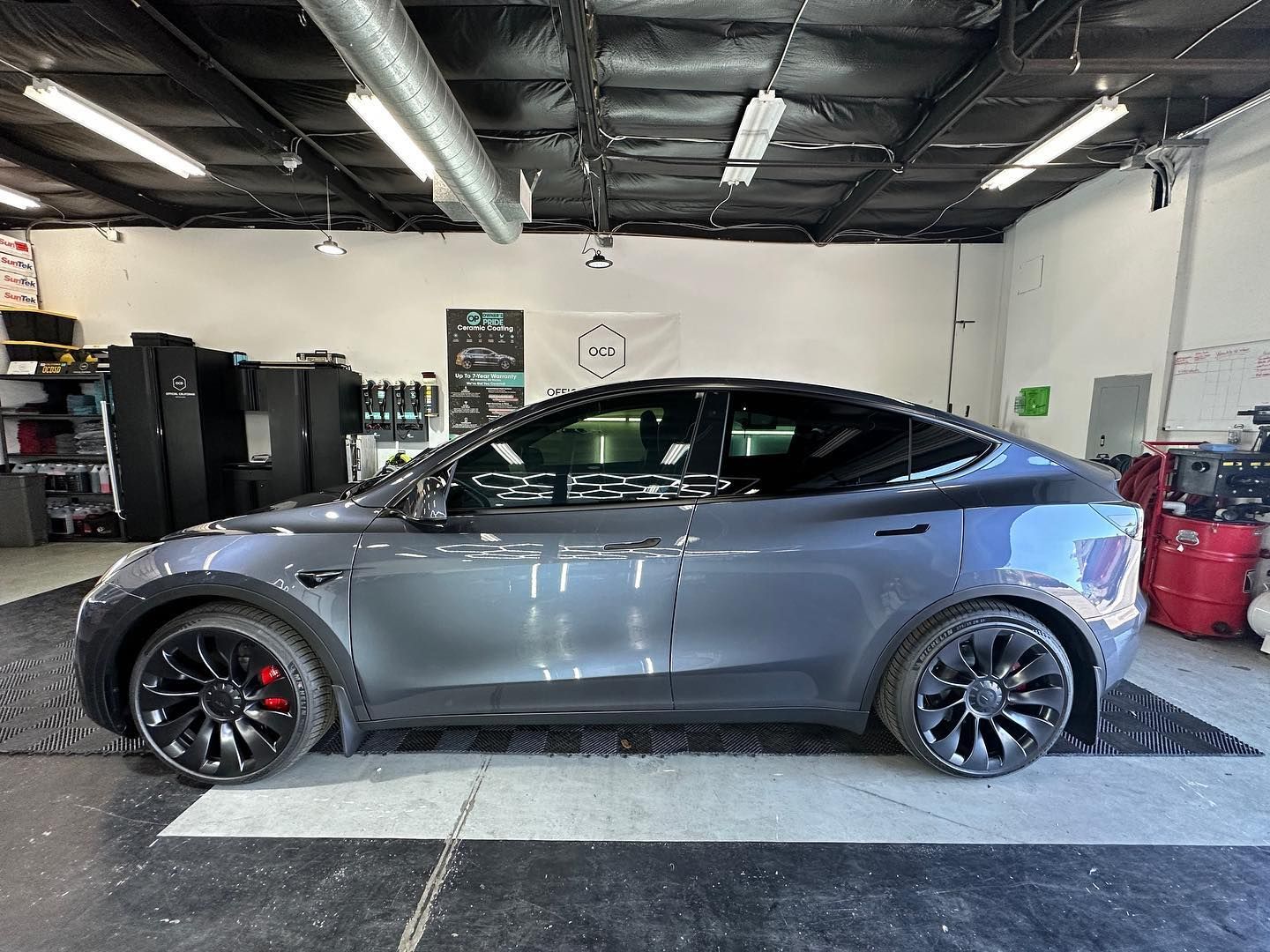
Benefits of Paint Protection Film
PPF acts as a guard, far surpassing simple protection—it transforms the way you maintain your automobile. One of its most remarkable advantages of PPF is scratch resistance. Driving through gravel roads or dealing with errant shopping carts in parking lots can leave your paint vulnerable to nicks and scratches. However, with the application of PPF, those worries are diminished significantly. The robust film absorbs everyday impacts, allowing your vehicle to maintain its flawless appearance.
But wait—it gets better! PPF also serves as a barrier against unsightly stains that could mar your vehicle's aesthetic appeal. Think about those unavoidable nuisances, like bird droppings or tree sap; they can etch into paint if left unchecked for too long. With a protective film in place, these corrosive substances roll off easily, safeguarding your car’s surface against potential harm.
Beyond protection against environmental hazards and minor mishaps, another compelling reason to consider PPF is its potential to enhance your car’s resale value. When prospective buyers pull up to view a used car, first impressions matter immensely. If the exterior looks pristine and well-maintained, it reflects care and attention that resonate within the market. Vehicles outfitted with PPF typically look newer for longer, making them far more attractive to buyers down the line.
Protect Your Vehicle Using Paint Protection Film
Knowing the science behind paint protection film (PPF) helps you to see why it is among the wise purchases you could make for your vehicle. PPF shields against scratches, rock chips, UV damage, and environmental contaminants with its advanced multi-layer design and self-healing characteristics. It's more than just a barrier; it's a means of preserving the perfect finish of your car, increasing its lifetime, and maintaining its resale value.
At
Official California Detailing, we customize PPF to exactly fit your car, guaranteeing flawless coverage and maximum protection. Our staff employs top-notch materials and methods to produce results that not only improve the look of your vehicle but also guard it.
Contact Official California Detailing today to find out more about how PPF helps your car look perfect even if daily driving can wear it down.
Contact us at (619) 760-4962
to book your PPF installation now or schedule a consultation. We are here to provide the best defense your car deserves!
